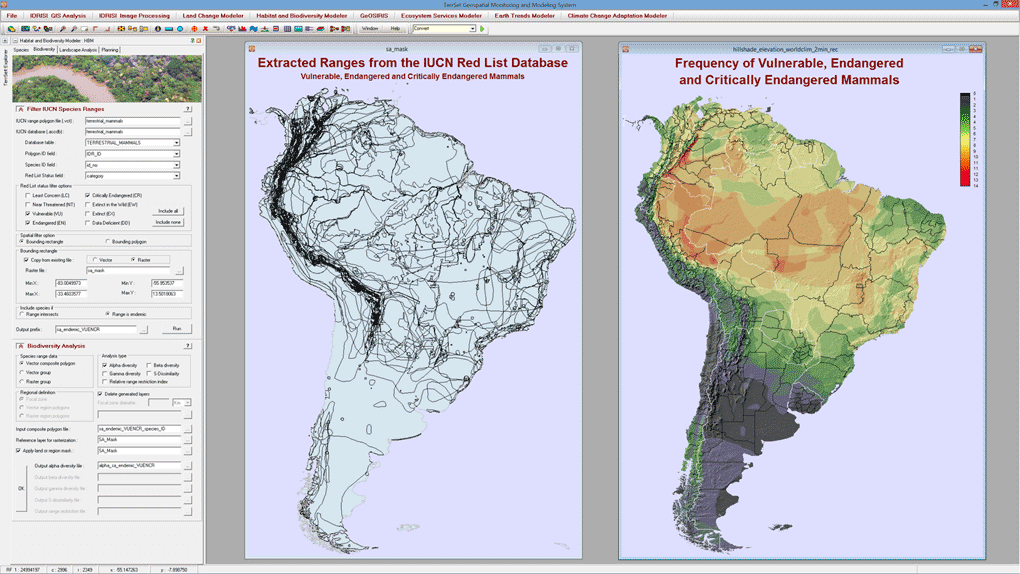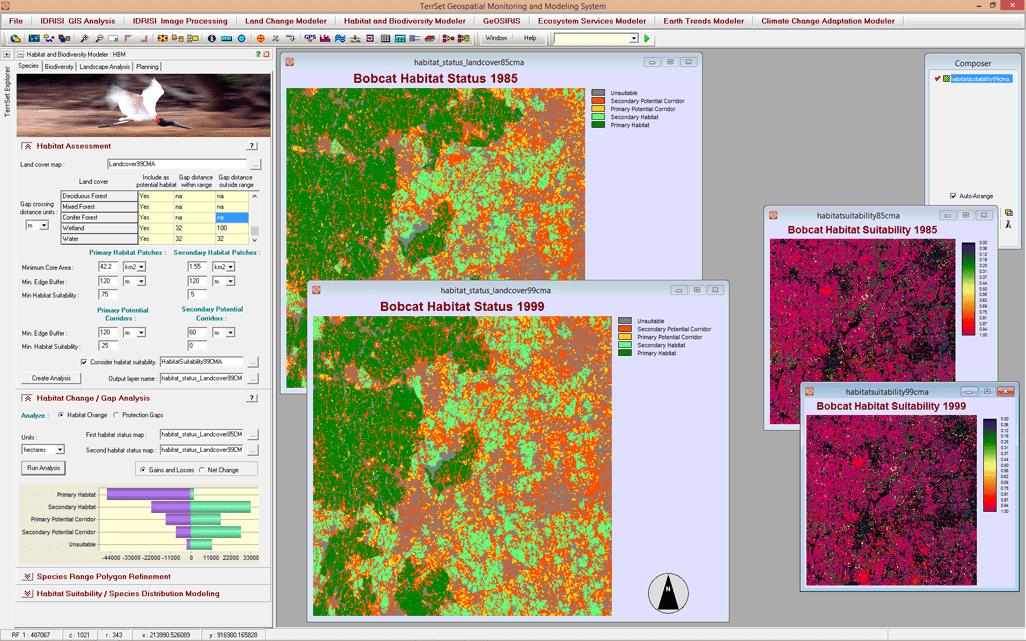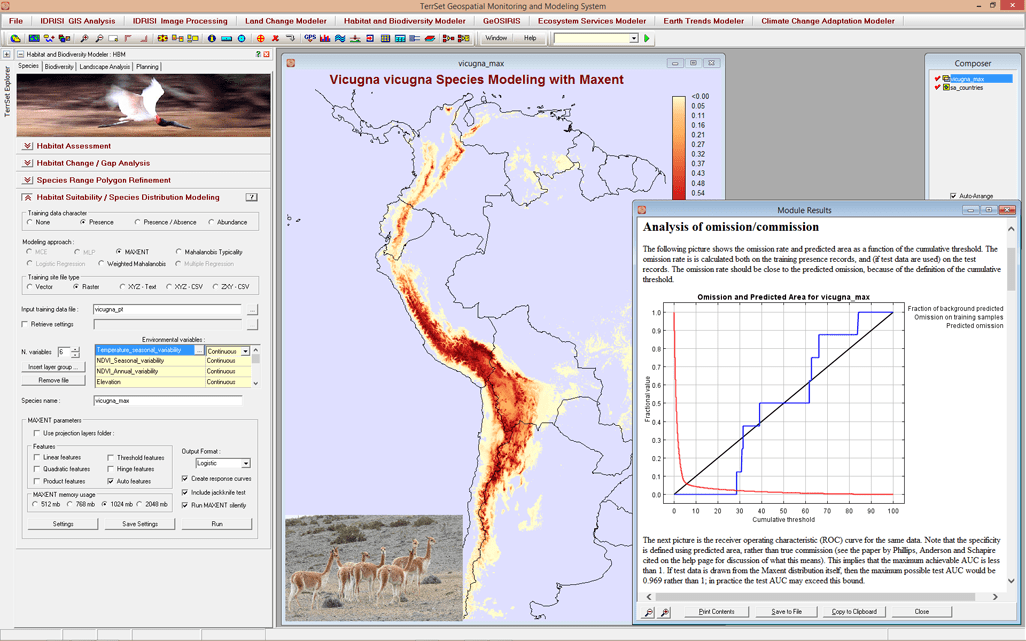The Habitat and Biodiversity Modeler is a fully integrated support system within TerrSet software for habitat assessment, landscape pattern analysis and biodiversity modeling. There are tools for species distribution modeling and reserve planning. There is also a facility to import IUCN species range data and model biodiversity. With the Habitat and Biodiversity Modeler, you can combine the future scenario analysis from Land Change Modeler and the Climate Change Adaptation Modeler to model and visualize potential impacts due to landscape or climate change.
Habitat and Biodiversity Modeler Key Features
Species Distribution Modeling
- Model species distributions or habitat suitability using a variety of empirical modeling approaches. An interface to Maxent is available.
- Use environmental variable maps to empirically refine species range polygon maps.
Impact Analysis
- Assess the effect of land cover change on habitat including habitat assessment, habitat change analysis, and species gap analysis.
- Derive landscape metrics including pattern analyses from a single land cover map or change process analysis from multiple land cover maps.
Biodiversity Analysis
- Calculate biodiversity through mapping of alpha diversity, gamma diversity, beta diversity, Sorensen’s dissimilarity, and range restriction.
- Import species range maps from the IUCN Red List of Threatened Species database.
Land Planning
- Generate biological corridor designs that are optimized for habitat suitability, ecological significance and protection status.
- Develop reserve selection and design scenarios using an interface to MARXAN, a conservation planning tool.



